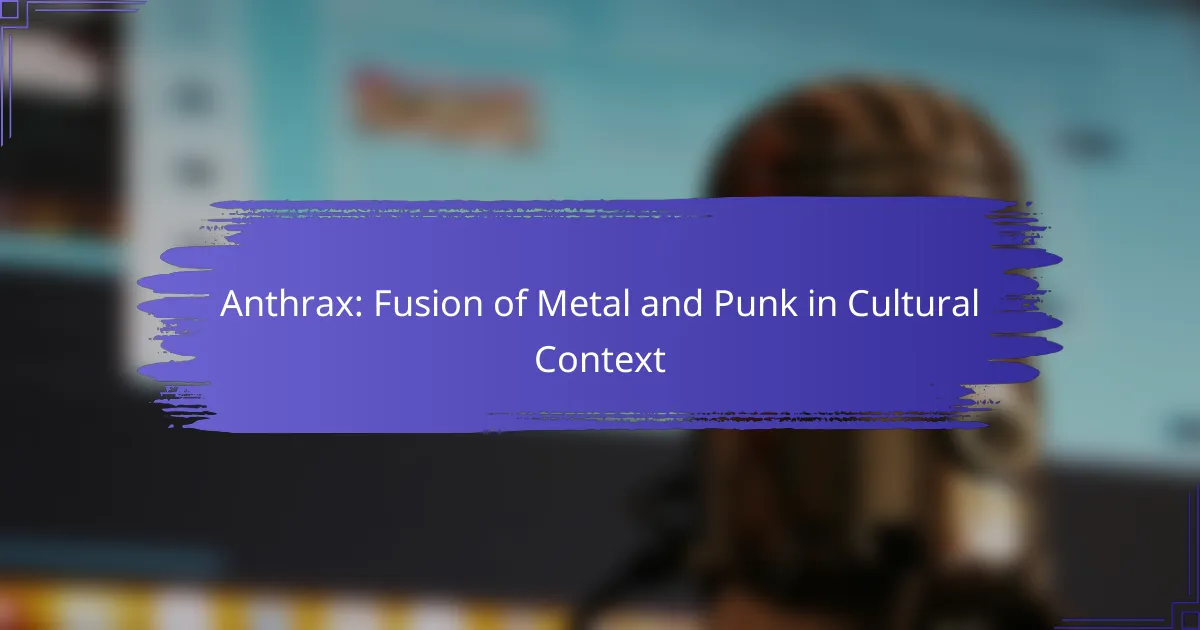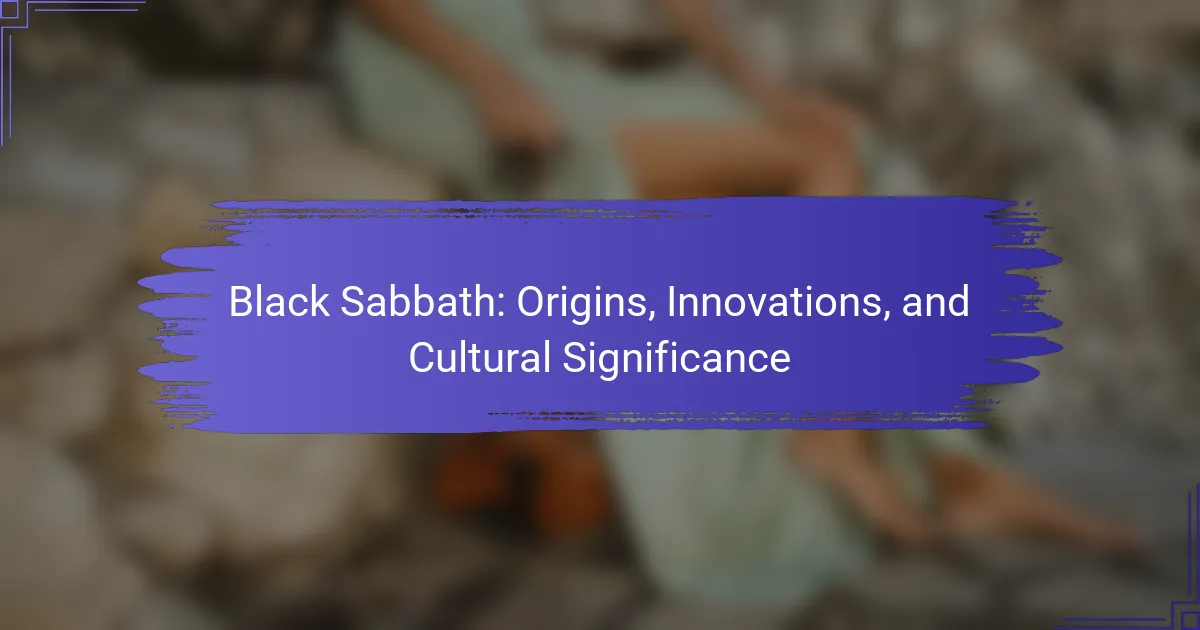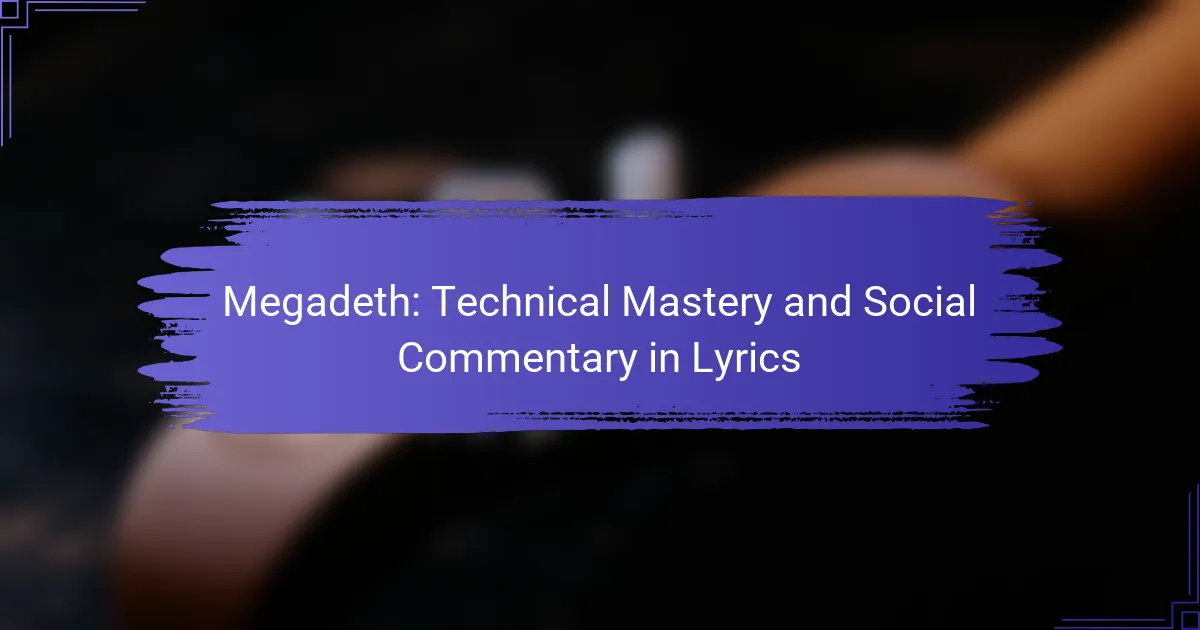Female metal musicians have profoundly impacted the genre through their unique styles and powerful performances. They have influenced subgenres like symphonic metal, addressed social issues in their lyrics, and inspired a new generation of artists. Their contributions challenge stereotypes and foster inclusivity within the metal community, enhancing the genre’s richness and diversity. Increased visibility and advocacy for gender equality signal a transformative era for women in metal.

What are the key contributions of female metal musicians to the genre?
Female metal musicians have significantly shaped the genre through their unique styles, lyrical themes, and groundbreaking performances. They have introduced diverse perspectives, challenging stereotypes and expanding the boundaries of metal music.
One key contribution is their influence on subgenres such as symphonic metal, with artists like Tarja Turunen and Floor Jansen leading the way. Their powerful vocals and theatrical elements have redefined the sound and presentation of metal.
Additionally, female musicians have addressed social issues in their lyrics, bringing attention to topics like empowerment, identity, and mental health. This has resonated with a wider audience and fostered inclusivity within the metal community.
Moreover, the rise of all-female bands and female-fronted groups has inspired a new generation of musicians, encouraging more women to pursue careers in metal. This shift has led to increased visibility and recognition of female talent in a traditionally male-dominated genre.
How have female musicians influenced the evolution of metal music?
Female musicians have significantly shaped metal music by introducing diverse sounds and perspectives. Pioneers like Doro Pesch and Lita Ford broke barriers in the 1980s, blending powerful vocals with heavy instrumentation. Their contributions inspired future generations, including contemporary artists like Floor Jansen and Alissa White-Gluz, who continue to push the genre’s boundaries. Female musicians have not only expanded the sonic landscape but have also addressed themes of empowerment and resilience, enriching the lyrical content of metal. This evolution reflects a growing recognition and acceptance of women’s roles in a traditionally male-dominated genre.
Which notable female metal musicians have made significant impacts?
Notable female metal musicians have significantly influenced the genre through their artistry and activism. Artists like Lita Ford, known for her pioneering guitar work, and Angela Gossow, who broke barriers as a female frontwoman in death metal, have reshaped perceptions of women in metal. Additionally, Floor Jansen’s powerful vocals and stage presence have garnered widespread acclaim, while bands like Nightwish and Arch Enemy have showcased female talent at the forefront. Their contributions have expanded the genre’s boundaries and inspired countless musicians.
What roles do female musicians play in shaping metal subgenres?
Female musicians significantly influence metal subgenres through innovation, representation, and collaboration. They challenge stereotypes and broaden the genre’s appeal. Notable figures like Angela Gossow and Lzzy Hale have redefined vocal styles and stage presence, inspiring new generations. Their contributions enhance diversity and creativity within metal, fostering a more inclusive community.
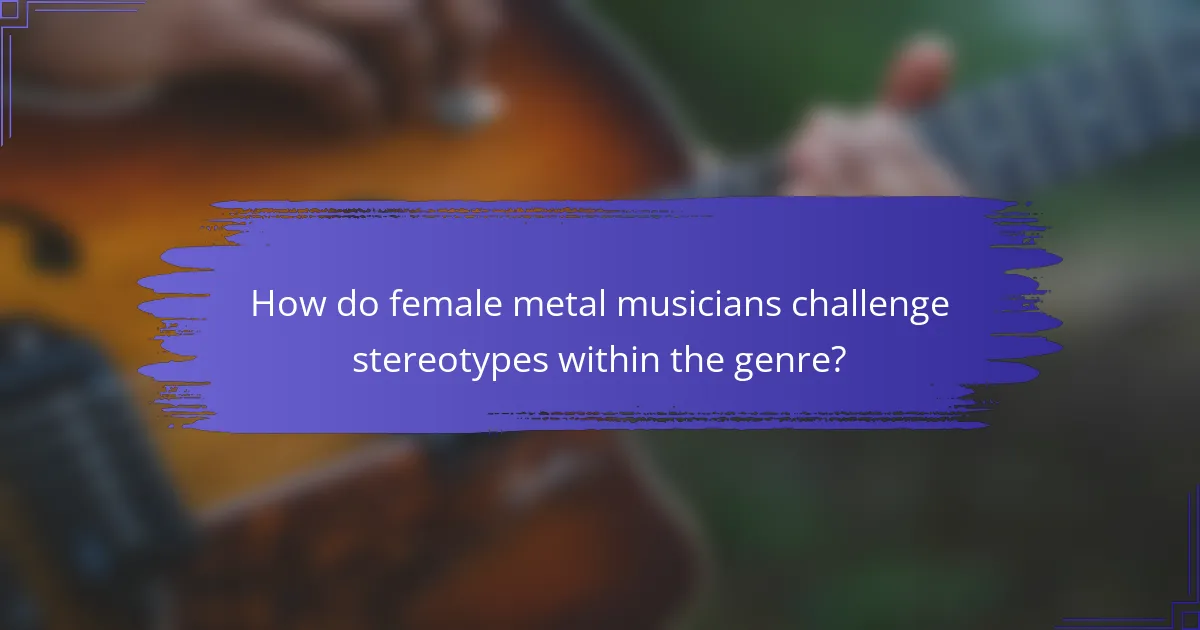
How do female metal musicians challenge stereotypes within the genre?
Female metal musicians challenge stereotypes by showcasing talent and diversity, redefining the genre’s image. They break barriers through powerful performances and unique musical styles. Artists like Lzzy Hale and Angela Gossow highlight the capability of women in heavy music. Their contributions foster inclusivity, inspiring future generations. This shift in perception enhances the genre’s richness and broadens its audience.
What barriers have female musicians faced in the metal scene?
Female musicians in the metal scene face significant barriers, including gender bias, lack of representation, and limited access to opportunities. These challenges hinder their visibility and career advancement. Many female metal artists encounter stereotypes that question their authenticity and technical abilities. Additionally, the predominantly male-dominated industry often results in fewer networking opportunities and support systems for women. As a result, female musicians frequently struggle to gain equal recognition and respect within the genre.
How do female musicians express their identity through metal?
Female musicians express their identity through metal by challenging stereotypes and redefining genre boundaries. They often incorporate personal narratives, cultural influences, and feminist themes into their music and performances. This expression fosters a sense of empowerment and community among listeners. Notable examples include artists like Lita Ford and Angela Gossow, who have influenced the genre while showcasing their unique identities. Their contributions highlight the diversity and strength of female voices in metal, enriching the overall landscape of the genre.
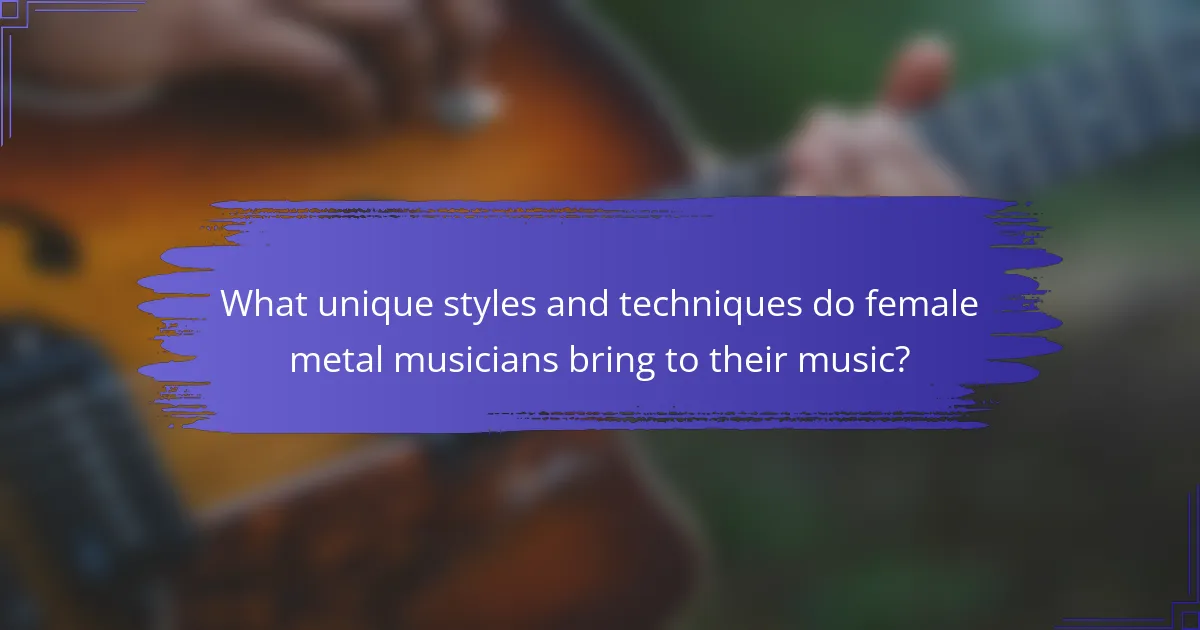
What unique styles and techniques do female metal musicians bring to their music?
Female metal musicians bring diverse styles and techniques that enrich the genre. They often incorporate unique vocal techniques, blending melodic singing with aggressive growls. This duality enhances emotional depth in their music. Additionally, many female musicians challenge traditional genre norms by experimenting with instrumentation and song structures. Their contributions often include themes of empowerment and personal struggle, reflecting their unique perspectives. This distinct approach fosters a broader acceptance and appreciation of metal among diverse audiences.
Which vocal styles are commonly associated with female metal artists?
Female metal artists commonly utilize a range of vocal styles, including clean singing, growling, and screaming. Clean singing often showcases melodic and emotional expression, while growling and screaming provide intensity and aggression. Unique attributes of female vocalists can include operatic techniques and versatile ranges, distinguishing them within the genre. Examples include Tarja Turunen’s operatic style and Angela Gossow’s powerful growls, illustrating the diversity of vocal techniques in female-led metal.
How do instrumentation choices differ among female metal musicians?
Female metal musicians often choose instrumentation that reflects their unique styles and influences, showcasing diversity in the genre. Many female musicians gravitate towards guitar, bass, and drums, but their choices can differ significantly based on personal expression and genre subcategories.
For instance, female guitarists like Nita Strauss and Lzzy Hale often employ technical solos and heavy riffs, while others may focus on melodic elements. In contrast, female drummers such as Anika Nilles emphasize intricate rhythms and dynamic play. Additionally, some female musicians incorporate unconventional instruments, such as keyboards or orchestral elements, to expand the genre’s boundaries.
Overall, instrumentation choices among female metal musicians illustrate a broader trend of innovation and individuality, enhancing the genre’s richness.
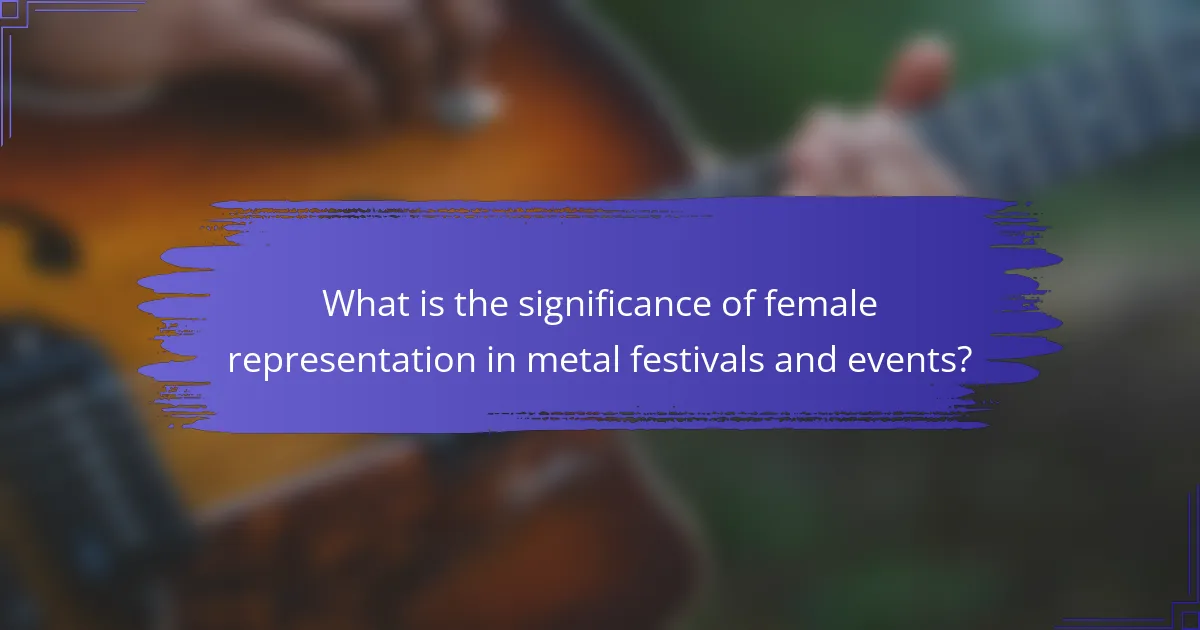
What is the significance of female representation in metal festivals and events?
Female representation in metal festivals is crucial for diversity and inclusivity. It enhances the genre by showcasing talent and broadening perspectives. Female musicians contribute unique sounds and narratives, enriching the overall experience for audiences. Their presence challenges stereotypes and inspires future generations.
How do female-led bands perform at major metal festivals?
Female-led bands often excel at major metal festivals, showcasing unique talent and perspectives. Their performances contribute to diversifying the genre and challenging stereotypes. Notably, festivals like Wacken Open Air and Download Festival have increasingly featured female musicians, reflecting a shift in audience acceptance and industry support. This visibility helps inspire future generations of female metal artists, reinforcing their impact on the genre.
What initiatives promote female participation in the metal community?
Several initiatives promote female participation in the metal community, enhancing diversity and representation. Organizations like Girls Rock! and She Shreds provide mentorship and resources for female musicians. Festivals such as Metal Female Voices Fest celebrate women in metal, showcasing their talents. Online platforms and social media campaigns raise awareness and build supportive networks. These efforts not only empower female artists but also enrich the genre’s overall landscape.
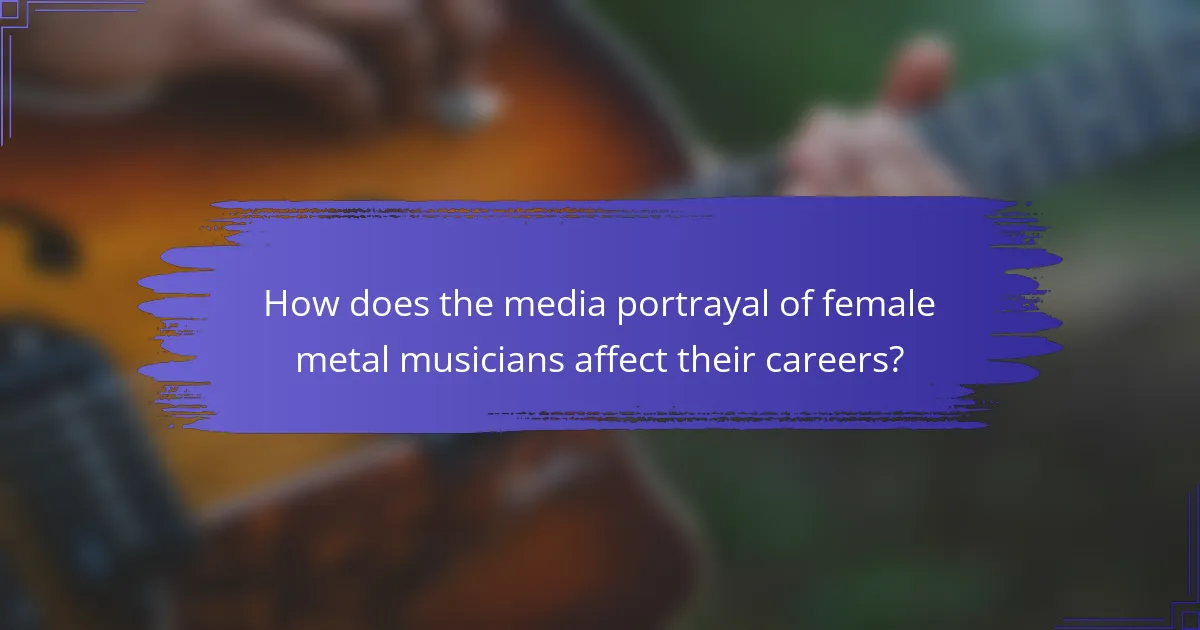
How does the media portrayal of female metal musicians affect their careers?
The media portrayal of female metal musicians often limits their career opportunities and influences public perception. Stereotypes can overshadow their musical talents, leading to underrepresentation in media coverage. This portrayal affects their ability to gain recognition and secure performances. Moreover, it can shape audience expectations, which may hinder their artistic expression. As a result, many female musicians face challenges in achieving the same level of success as their male counterparts.
What are the common themes in media coverage of female metal artists?
Media coverage of female metal artists often highlights themes of empowerment, diversity, and breaking stereotypes. These musicians challenge traditional gender roles and contribute significantly to the genre’s evolution. Coverage frequently emphasizes their technical skills, creativity, and influence on both fans and aspiring artists. Additionally, narratives often focus on the struggles they face in a male-dominated industry, showcasing resilience and determination. Overall, the media portrays female metal musicians as vital contributors who enrich the metal scene with unique perspectives and talents.
How do social media platforms influence the visibility of female musicians?
Social media platforms significantly enhance the visibility of female musicians by providing accessible channels for promotion and engagement. These platforms allow female metal musicians to showcase their talent, connect with fans, and build communities. For example, platforms like Instagram and TikTok enable musicians to share clips of performances, behind-the-scenes content, and personal stories, fostering a deeper connection with their audience.
Moreover, social media algorithms often favor engaging content, allowing female musicians to reach wider audiences through shares and interactions. This increased visibility can lead to opportunities such as collaborations, festival bookings, and media coverage. As a result, female metal musicians can gain recognition in a genre that has historically been male-dominated, contributing to a more diverse music landscape.
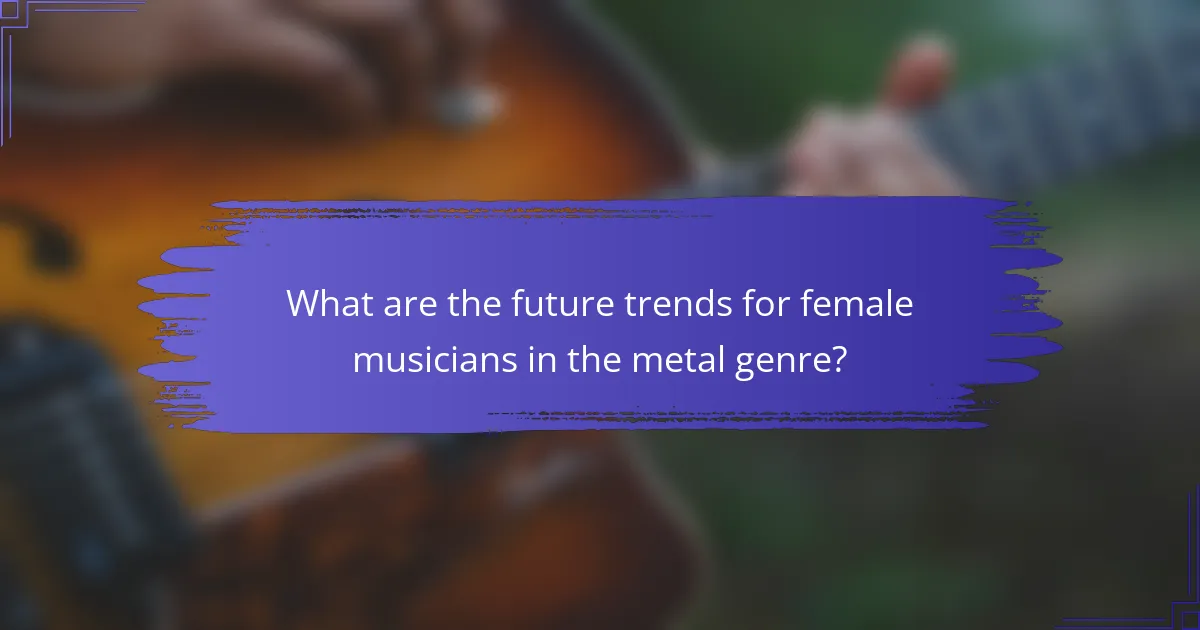
What are the future trends for female musicians in the metal genre?
Female musicians in the metal genre are set to gain more recognition and influence in the future. Increased visibility through social media platforms allows emerging artists to showcase their talent directly to audiences. The rise of inclusive festivals and events highlights female contributions, fostering a supportive community. Collaborations between established and new artists will enhance diversity in sound and style, pushing boundaries within the genre. Additionally, growing advocacy for gender equality in the music industry will empower more women to pursue careers in metal. These trends collectively signify a transformative era for female metal musicians.
How is the next generation of female metal musicians emerging?
The next generation of female metal musicians is emerging through increased visibility and support within the genre. This shift is characterized by diverse styles and innovative approaches that challenge traditional norms. Female musicians are gaining recognition for their contributions, leading to a more inclusive metal community. As a result, the impact of female artists is reshaping the genre’s landscape, fostering collaboration and inspiring new talent.
What role does mentorship play in supporting female musicians?
Mentorship plays a crucial role in supporting female musicians by providing guidance, networking opportunities, and emotional support. Female metal musicians often face unique challenges, and mentorship helps them navigate these obstacles. For example, established female artists can share insights on industry dynamics, performance techniques, and personal experiences, fostering resilience and confidence. Additionally, mentorship can enhance visibility for female musicians, encouraging more inclusive representation in the genre. As a result, mentorship not only empowers individuals but also contributes to a more diverse and vibrant metal music scene.
What are the best practices for promoting female talent in the metal scene?
Promoting female talent in the metal scene requires strategic initiatives and community support. First, create inclusive platforms that highlight female musicians through festivals and showcases. Second, establish mentorship programs pairing emerging female artists with established ones. Third, promote female-led bands in media and playlists to increase visibility. Fourth, encourage music education that focuses on female representation. Lastly, foster supportive networks that celebrate diversity and collaboration within the genre. These practices enhance recognition and empower female musicians to thrive.
